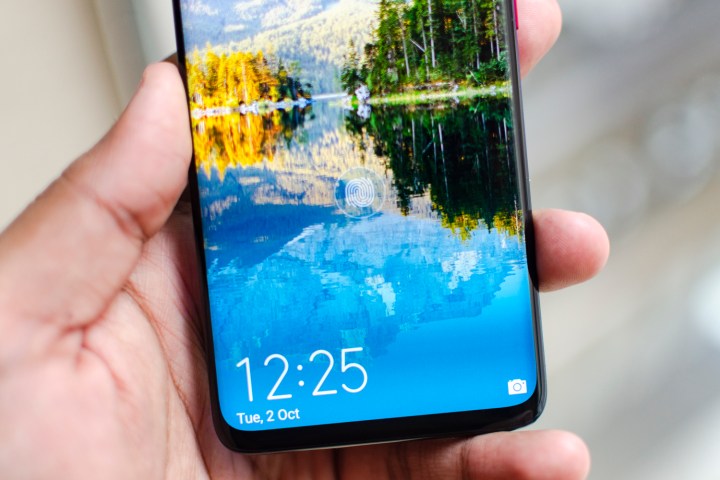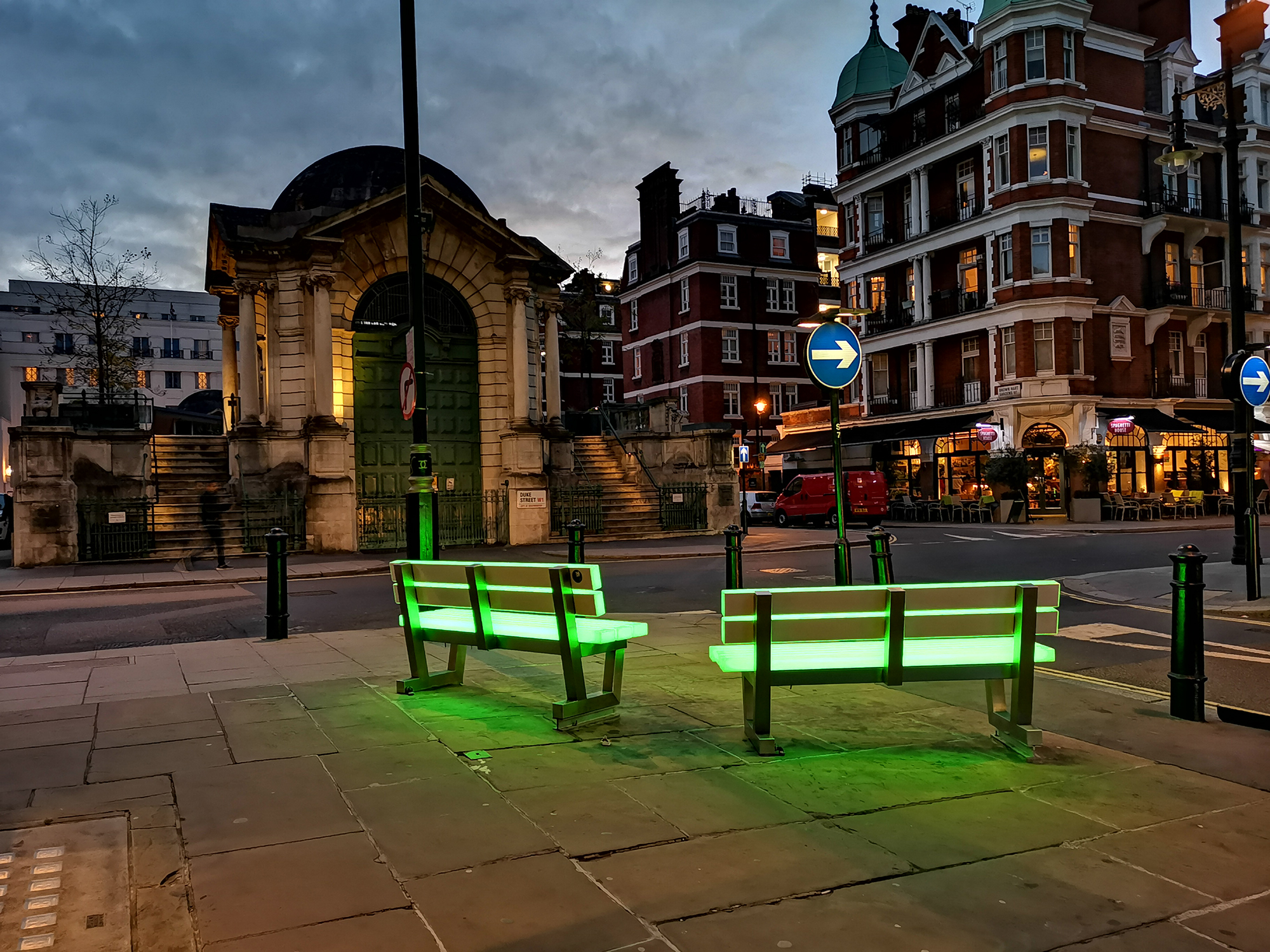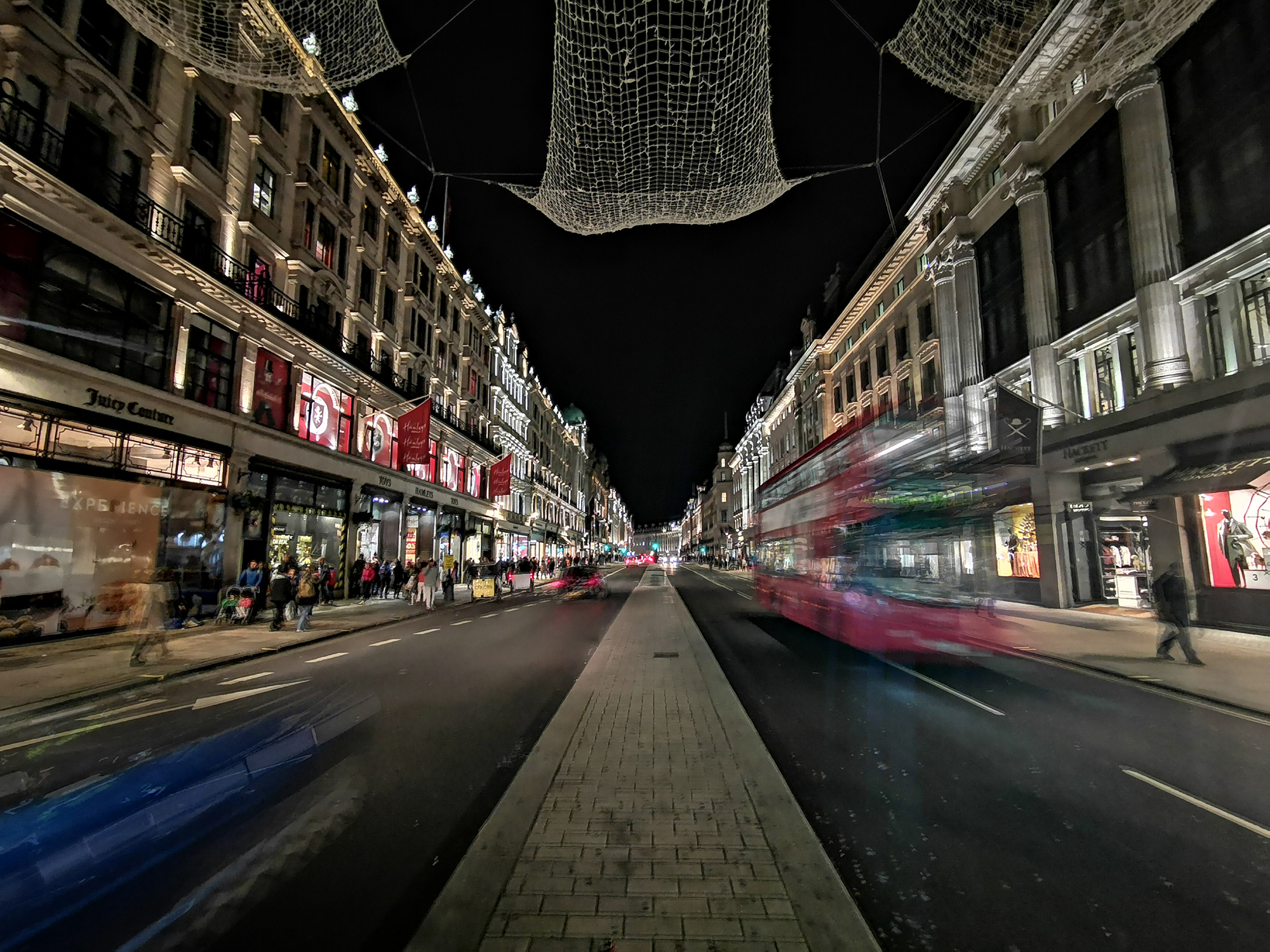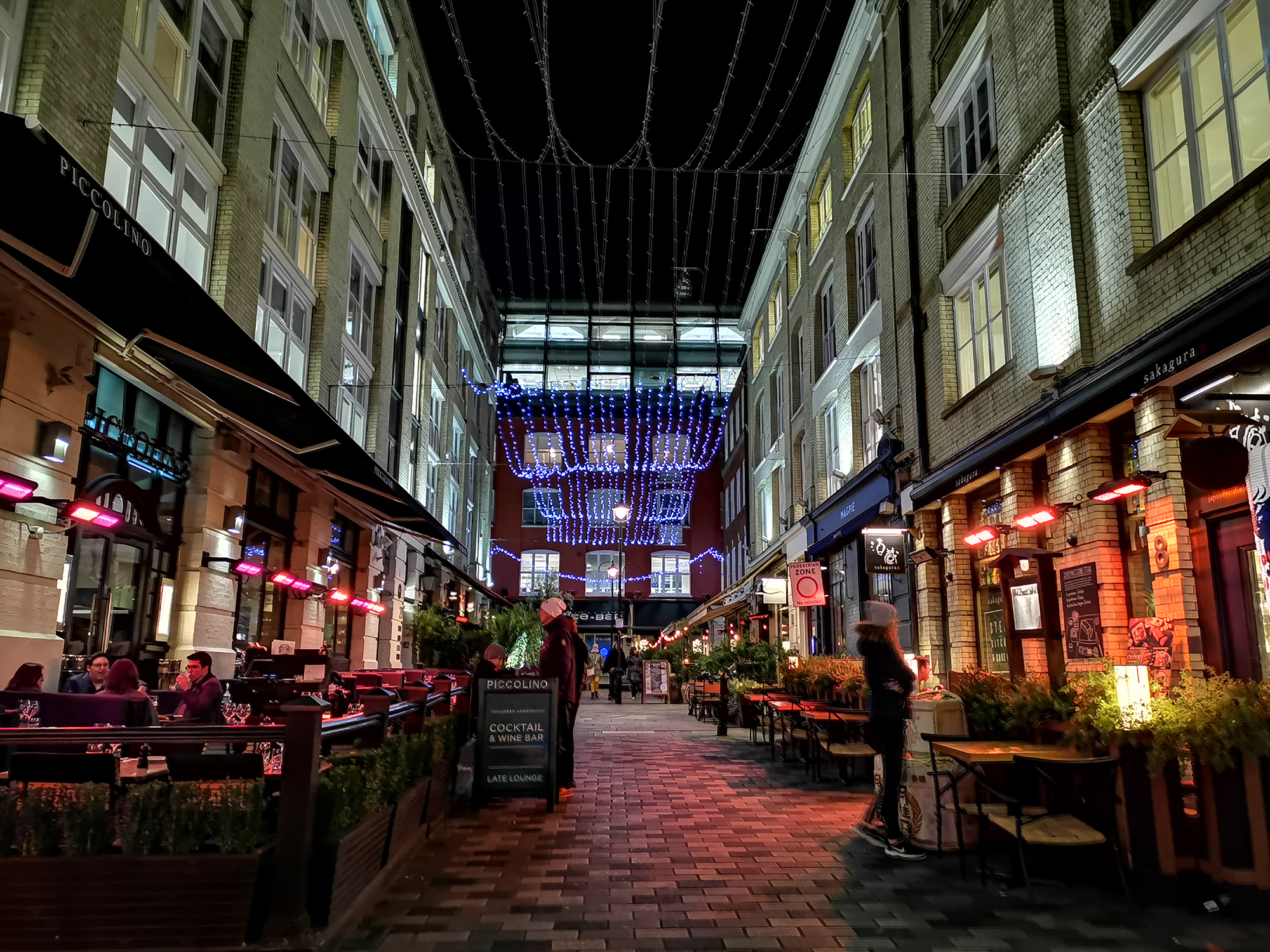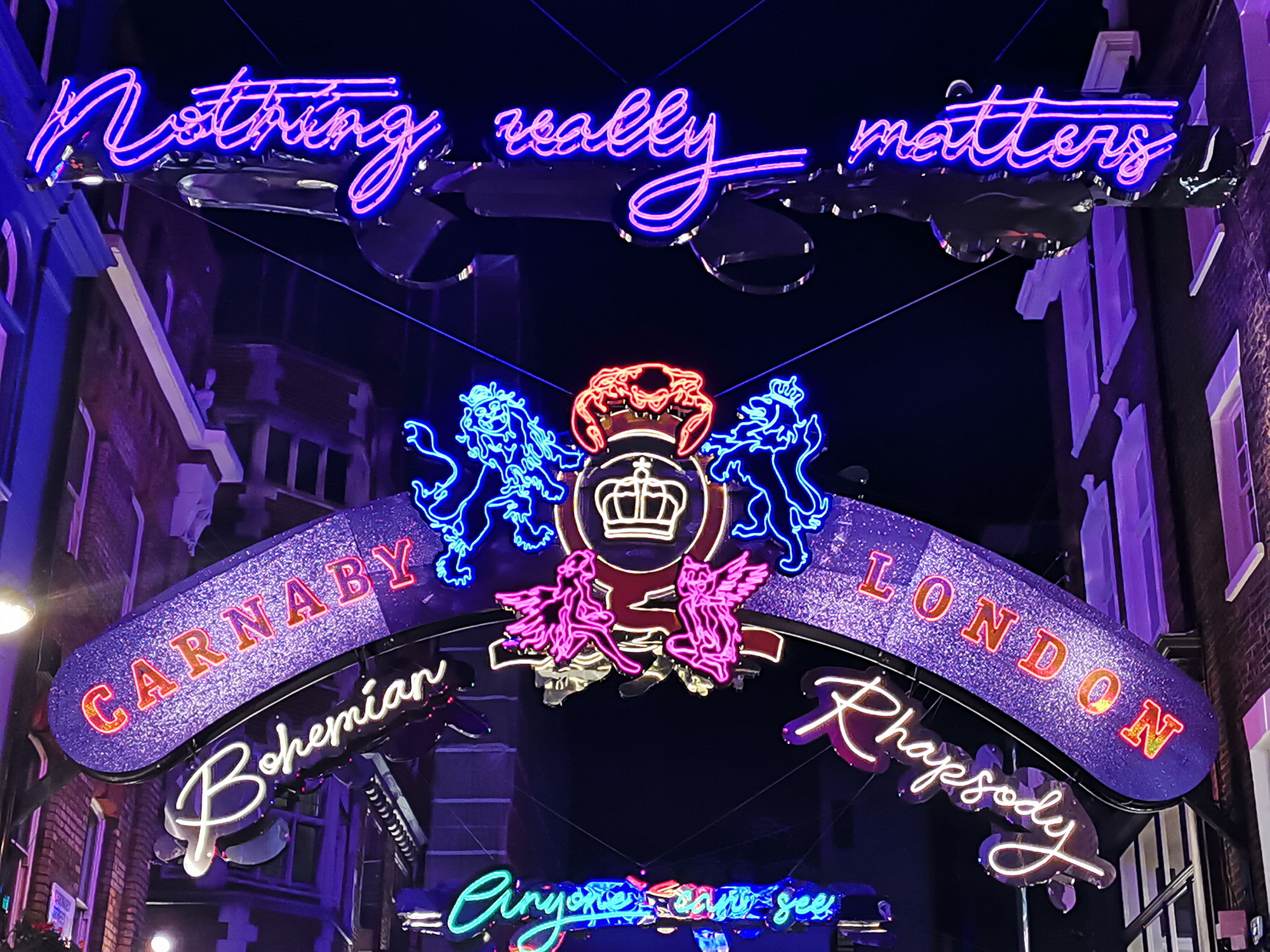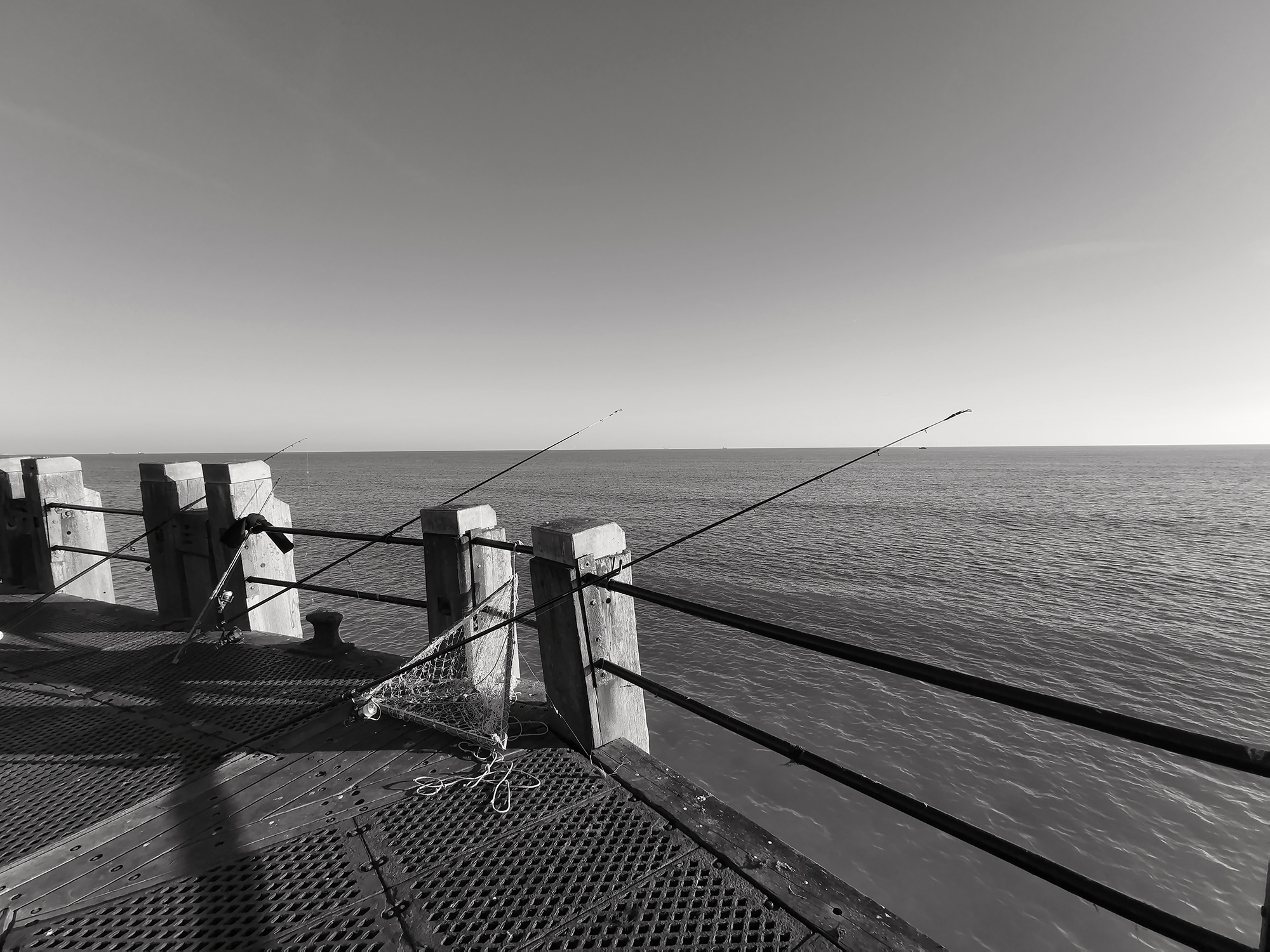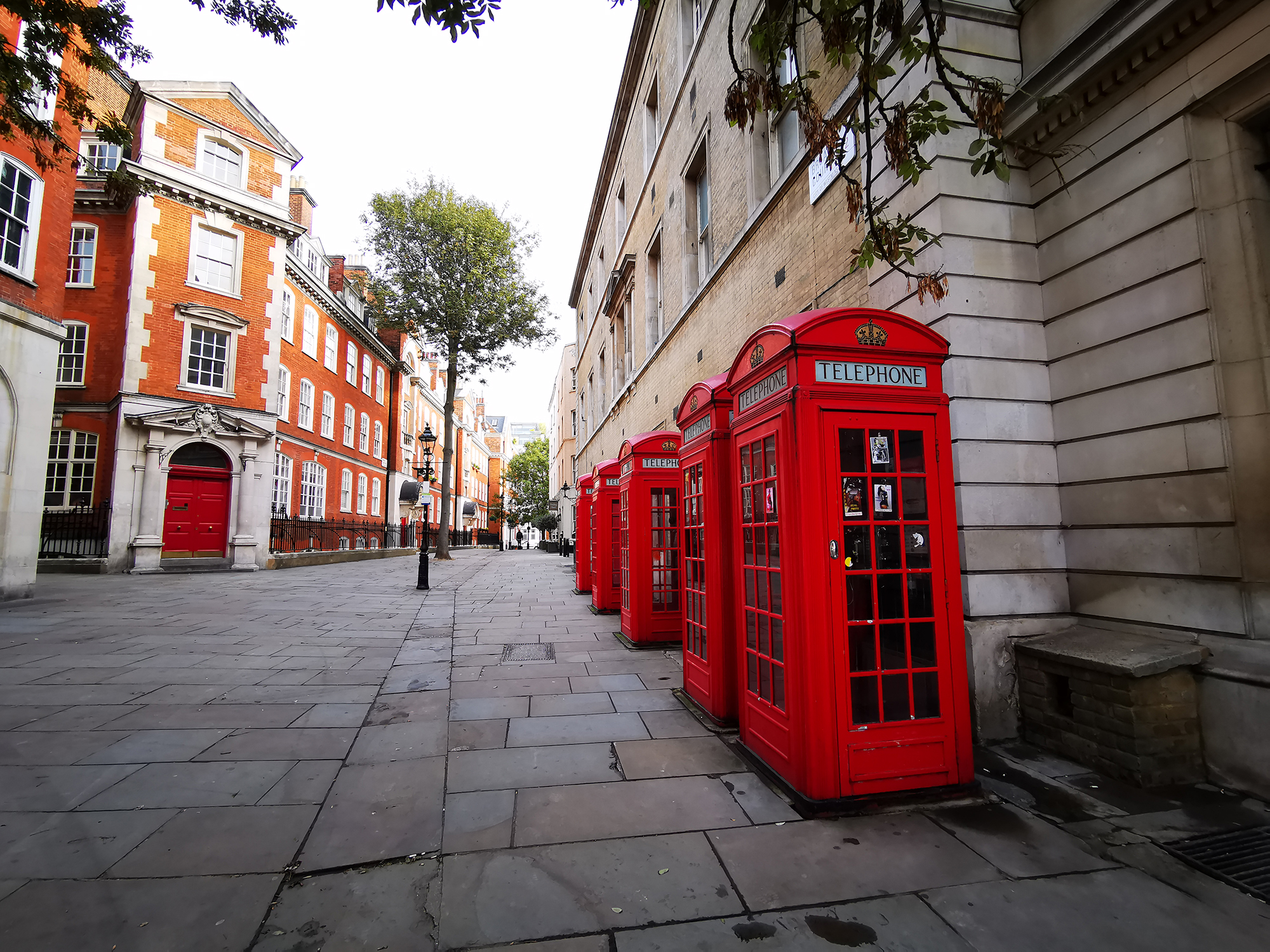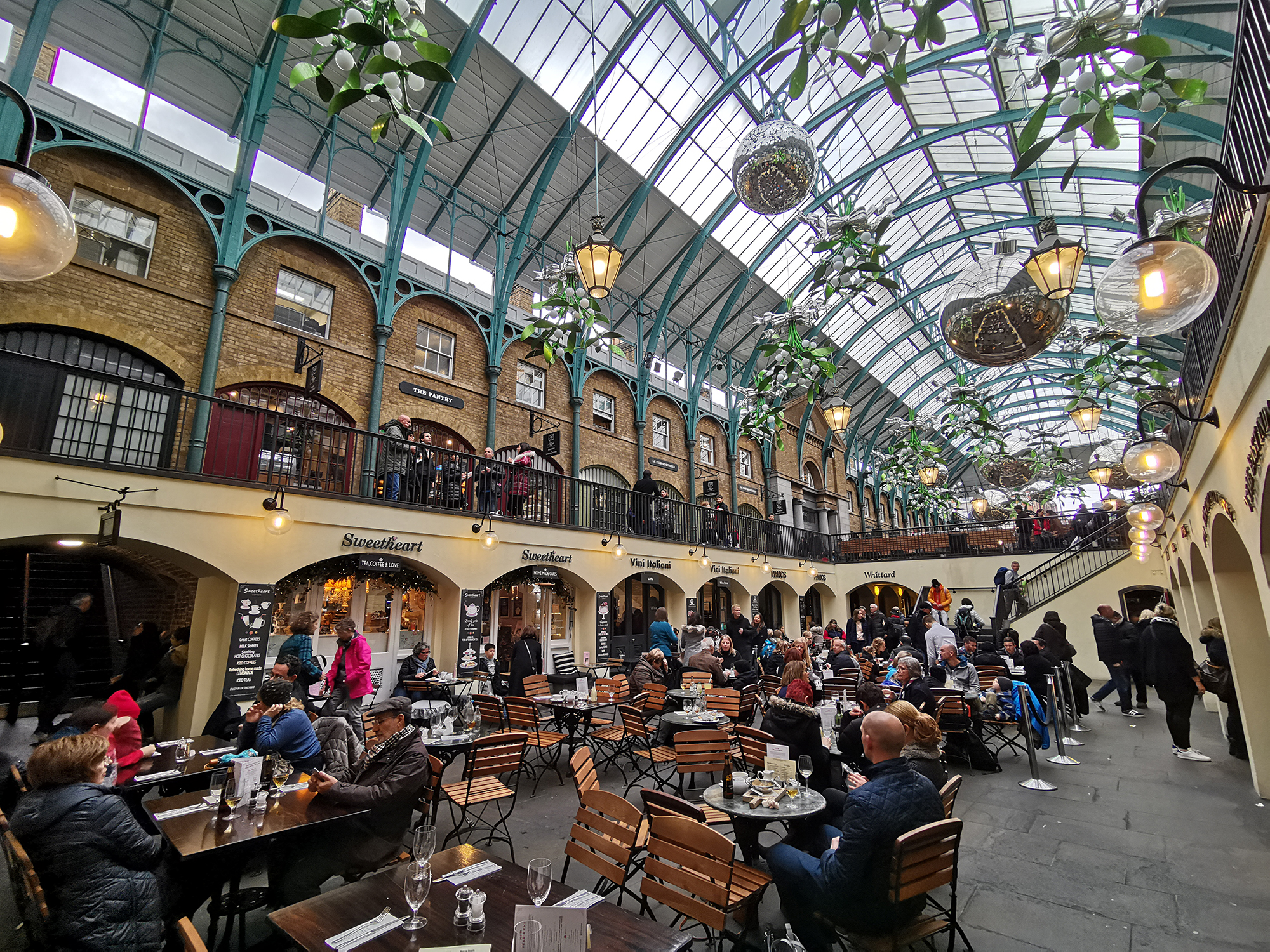“The fabulous Huawei Mate 20 Pro has more features, more ability, and more tech prowess than you’ll know what to do with.”
- Beautiful screen
- Feature-packed, pro-quality camera
- Great battery life
- Stunning modern design
- More features than you’ll know what to do with
- In-display fingerprint sensor can frustrate
- No U.S. availability
The Huawei Mate series has evolved hugely over the last few years, perhaps more so than any other smartphone model out there. Look back at the Huawei Mate 9: While capable and impressive for the day, it was one of the least visually exciting phones ever made. Compared to the new Mate 20 Pro, it’s barely recognisable as the same device family. What’s more, the visual transformation from dull to dazzling has happened at a breakneck pace.
Has the technology evolved to match? What about the experience of using the Mate 20 — does it feel like 2018 or 2015? Neither. We’d say it’s 2019 and beyond. Such is the technical prowess of this astonishing phone. Despite this, there’s still one thing we want to see from it, and it has nothing to do with the specs of features. Let’s talk further about the phone first.
Stunning design and display
Give the Huawei Mate 20 Pro some space, Samsung, because the Galaxy S9 Plus is no longer the best looking smartphone in the room. There were concerns about the unusual square camera lens array on the back ahead of release, but it’s considerably better realized than expected. Huawei’s designers have been listening to Porsche Design, and discovered symmetry is best. Top center is where it belongs. It makes the phone look like a phone, not a camera.
The rest of the rear panel is unfettered by fingerprint sensors, flash units, or anything else unnecessary. There’s a Huawei and Leica logo, the camera and its sensors are enclosed in one box, and that’s it. We’re testing the Mate 20 Pro in its new Hyper Optical finish, which looks and feels a little like the surface of a vinyl record. It’s unlike any other phone, and the way it reflects light — especially in emerald green — is genuinely beautiful. It’s not quite as eye-catching as the new twilight finish, an evolution of the P20 Pro’s twilight, but it’s certainly unique.
It does share some similarities with the Galaxy S9 Plus, and in turn, the Porsche Design Mate RS. The sides taper down into subtle curves, and it’s wonderfully comfortable in the hand. However, it is quite slippery. The Hyper Optical rear panel resists fingerprints, but does not provide much extra grip, and those thin sides may see the phone slip from your hand. Our review phone came with a handy transparent TPU case in the box, which we’ve used constantly.
There’s a thin volume rocker, a slightly visually out of place red power button, as well as a USB Type-C charging jack around the edges, but there’s no headphone jack.
Related reading
- The best Huawei Mate 20 Pro cases to keep your stunning flagship safe
- Huawei Mate 20 Pro vs. Samsung Galaxy Note 9: Flagship fight
- Huawei and Leica’s monochrome lens is dead, so we celebrate its life
The screen measures 6.4-inches and is a fabulously bright AMOLED panel with a massive 3,120 x 1,440 pixel resolution, and it supports HDR too. Watching any high quality video on the Mate 20 Pro is an almost spiritual experience. You only need to play a 1,440p HDR test video from YouTube to see how astonishing it looks. You will have to mess with some display settings to see the benefits, though, as by default the Mate 20 Pro has Smart Display active, which lowers the resolution to save battery power. With it on, 1,440p is not an option on YouTube, for example. Select the highest resolution mode for the best video experience.
The notch at the top of the screen is functional, as it contains a 3D, depth-sensing camera for secure face unlock. The screen on either side is small, and not especially informative, as you often only see one notification icon next to permanent Bluetooth, NFC, network, battery, and time icons. The notch can be hidden under the settings if you really hate it.
The fabulous high-definition screen is exactly the display a beautiful phone like the Mate 20 Pro deserves. Visually, on every level, the Huawei Mate 20 Pro is unmatched today.
Biometric security
A major new feature on the Mate 20 Pro is also a world-first, according to Huawei. It’s the first truly commercialized in-display fingerprint sensor, in that it’s available on an international scale and produced in large numbers. That’s fine, but what’s really important is if it works. Because on the Porsche Design Mate RS, it didn’t, or at least, it didn’t do so consistently. The good news is it’s vastly improved on the Mate 20 Pro.
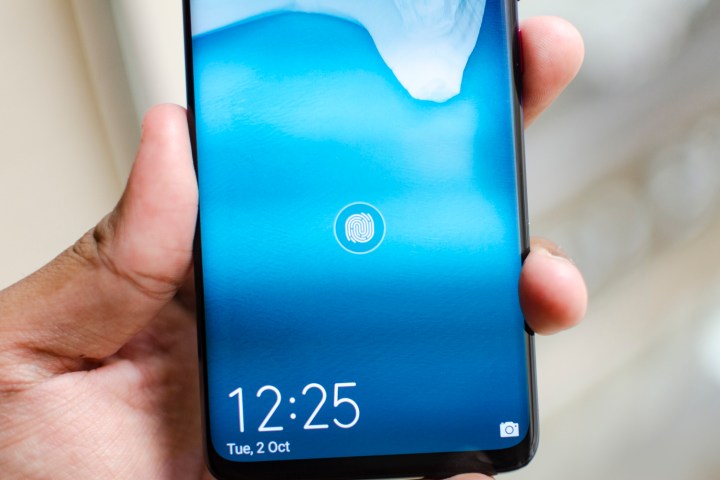
Set up is as easy as any other fingerprint sensor. It’s located an inch-and-a-half above the bottom of the screen, and operates without the need for adverse amounts of pressure, or specific finger placement outside of it needing to be on the sensor. It’s not quite as fast as we’d want from traditional fingerprint sensors, a fact obscured by the animation that shows while it’s reading your print. It’s also still not as reliable as we want. It can still take two tries for it to activate, and that’s annoying. It’s better than the Mate RS, but not perfect. We’ve seen the same issues with the in-display fingerprint sensor on the OnePlus 6T, suggesting the technology itself still has some development to be done.
What’s interesting is that we often had no need to use the fingerprint sensor, because the face unlock system is much faster, and has usually unlocked the phone before our finger met the screen. By default, the Mate 20 Pro wants you to swipe up on the screen before unlocking, but this can be changed to direct unlock under the security settings to just show the home screen. Do this, and the Mate 20 Pro unlocks almost instantly.
The Mate 20 Pro has a secure 3D unlock system for the face, which can be used with Google Pay, and it’s lightning fast — faster even than Apple Pay on the iPhone XS. There are some concerns online that the face ID system can be fooled by similar looking people, but so far this has not affected us.
Strong performance, EMUI requires a lot of setup
The Mate 20 Pro is one of the first phones to use Huawei’s own Kirin 980 processor with a dual-NPU, or Neural Processing Unit, that controls onboard artificial intelligence. It’s this that enables the clever video tricks and super-fast scene recognition, as the phone doesn’t need to communicate with the cloud. The Mate 20 Pro delivers the most seamless, and useful, artificial intelligence features on any smartphone we’ve used to date, equal only to the Pixel 3 and 3 XL.
How about benchmarks? While not representative of real-world behavior, they’re useful for comparison. Here’s how it scored on our three usual tests:
- AnTuTu 3DBench: 273,746
- Geekbench 4 CPU: 3,330 single-core; 9,791 multi-core
- 3DMark Sling Shot Extreme: 4,180 (Vulkan)
We have not experienced any performance issues with the Mate 20 Pro, and it has run all the apps we have wanted it to without fuss.
Our Mate 20 Pro has Android 9.0 Pie installed with EMUI 9.0 over the top, and the October security patch installed. Huawei made a big deal out of streamlining its user interface by slimming down menus, and removing superfluous options. In reality these things don’t really show through, and that’s a positive thing, because we tend to only notice issues when we’re frustrated.
For EMUI 9.0 Huawei has introduced a gesture control system, much like we’ve seen on iOS. It’s not the default, but it makes sense to use with the longer screen with small bezels. A swipe up returns to home, a swipe and hold shows running apps, and a swipe at the side of the screen goes back. The pleasing part of this is to be able to swipe back on either side of the screen, making it great for one-handed use. It’s slicker and more responsive than the gesture control system on the OnePlus 6T, but not quite up to the standard set by Apple and iOS.
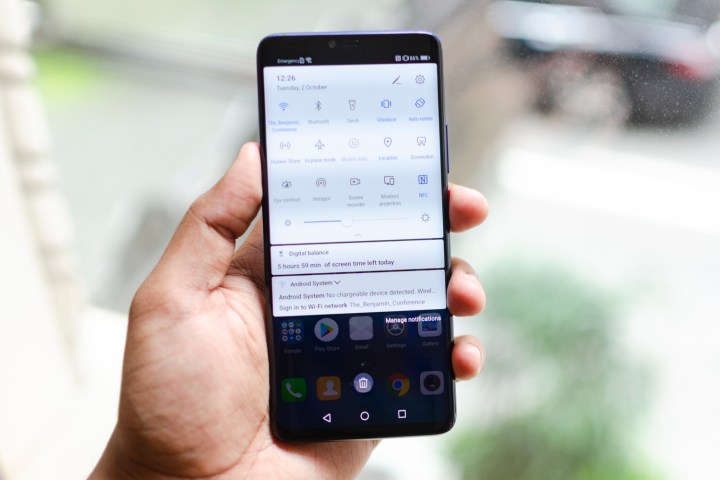
Huawei has built its own digital wellbeing feature into EMUI 9.0 called Digital Balance. Google’s own version is currently only available on Pixel phones, making this a welcome addition. You can set app time limits, see screen time breakdowns, and adjust the screen and app access at certain times of the day. Data is also available over a seven day period and for multiple apps too. If you’re at all concerned about cutting down your smartphone use, it will undoubtedly help, provided you commit to it.
What we do find is to get the best from EMUI you need to spend time setting it up, and tailoring it to your preferences. We’ve already mentioned the screen resolution settings, and the need to swipe up to unlock the phone, but there’s more. For example, by default notifications don’t activate the lock screen, and apps are spread across the home screen rather than hidden in a drawer. All these, and more, are options. Take time to get it working the way you like really pays off.
Additionally, Huawei insists on installing SwiftKey as the default keyboard, and it’s awful. From requests to share data to the awkward way it shows numbers, it’s by far the worst part of EMUI. For our sanity, we changed it to Google’s Gboard.
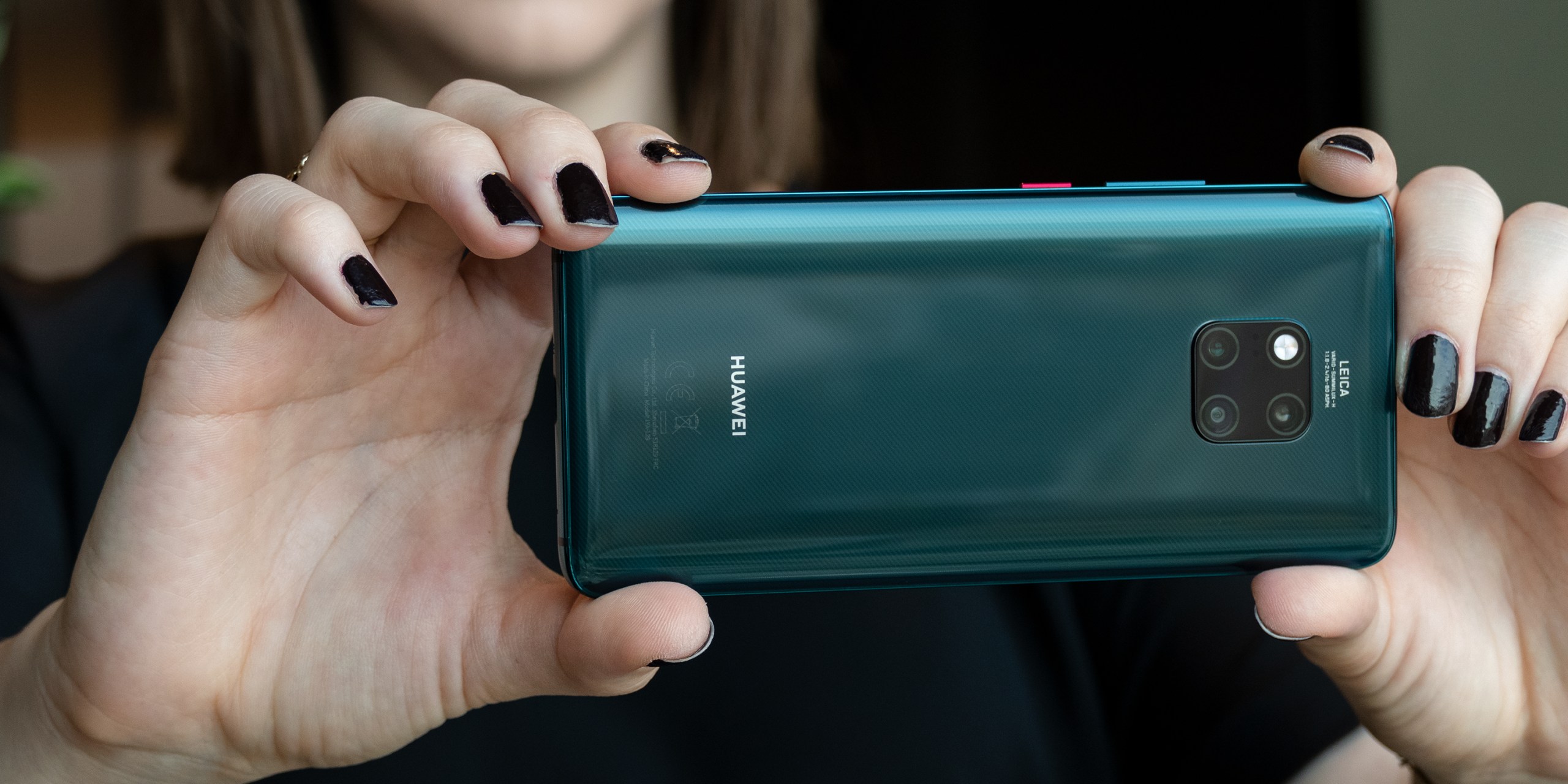
A photographer’s dream
Huawei has collaborated with Leica again on the Mate 20 Pro, and there are some changes over previous models. The monochrome lens has been replaced by an ultra-wide lens, and the specs are slightly altered from the P20 Pro. You get a standard 40-megapixel lens with an f/1.8 aperture, a 20-megapixel ultra-wide lens with an f/2.2 aperture, and finally an 8-megapixel telephoto lens with an f/2.4 aperture. Huawei’s artificial intelligence features are all here, as well as artificial image stabilization (AIS), Night mode, slow motion video, and a new Super Macro shot.
There are so many features it’s almost hard to know where to begin. So let’s just get to the crux of the matter — the Mate 20 Pro’s camera is unbelievably good, encourages more creativity than any other camera we’ve used, and is so comprehensive you’ll probably still be trying features out several months into ownership. Very few smartphones today can offer that, and Huawei’s dedication to creating brilliant cameras, with the help of teams that truly understand photography, simply cannot be understated.
The new ultra-wide camera is a success, and outside of LG and Asus phones, not seen very often. Huawei’s A.I. will prompt you, in some cases, to switch to it if it sees the scene will benefit from a wider viewpoint. Like Night mode — which also works really well in daylight — Ultra-wide isn’t just for landscapes either, and can be used in a variety of situations to produce interesting results. It replaces the monochrome lens, and Huawei has worked with Leica to add a filter instead, which is a decent alternative. Only if you put a photo taken with the P20 Pro’s monochrome lens alongside the Mate 20 Pro’s filter, will you see a difference, and even then it’s minimal.
Huawei’s dedication to creating brilliant cameras, with the help of teams that truly understand photography, simply cannot be understated.
Night mode, where the camera uses A.I.S. to allow tripod-free nighttime shots, continues to be fantastic. It’s mind-bending that a phone can take such outstanding low-light pictures, and while they may not be to everyone’s taste — they can reveal a little too much detail, and lose atmosphere — you won’t find anything like it elsewhere. If anything, it’s even better in the day too, adding a really unique look to photos.
It’s not perfect. The ultra-wide lens’ lower aperture does see it struggle in problematic lighting conditions, and Super Macro doesn’t always work, and even when it did the quality wasn’t as high as we would have liked. But by far the most annoying is the difference between what the viewfinder shows, and the photograph you actually take. Sometimes the screen will make you think the photo will turn out really badly, but take it anyway, and the result is totally different in a good way. Several pictures we took surpassed expectations, and had we only judged by what we saw on the screen, we never would have taken them.
There are some user interface issues too. Scrolling through the zoom levels to get to the ultra-wide lens is long-winded and frustrating if you happen to tap it one too many times, as you’re back to the start. It needs a dedicated setting, alongside Night and Aperture. We also hate the way the camera will quickly go into standby while we’re messing around setting up a shot, forcing a screen tap to wake it up again, and then having to set the shot up again.
While the stills camera has often been the focus (sorry) of Huawei’s recent phones, it has paid more attention to the video capabilities on the Mate 20 Pro. There are five new cinematic-style filters, enabled by the Kirin 980’s dual-NPU A.I. chip, which show real-time effects as you film. The two most interesting are Background Blur and A.I. Color. Background Blur adds a bokeh effect to your video, while A.I. Color sets the background in black and white, while keeping the subject in color. Both these operate only when the camera detects a face on screen. The other three are general filters that add atmosphere to your videos.
The effects are fun, and a real demonstration of Huawei’s A.I., but the limitation imposed by the effects only kicking in when they see a face, does limit the creative potential a little.
Fantastic battery life
Powering the phone is a 4,200mAh battery, the capacity of which is way beyond most other devices in its class. It really shows too, we’ve had two days easily out of the Mate 20 Pro, with normal use including games, social networking, email, and using the camera. On one day, with just some camera and social networking use, it lost less than 20-percent battery over the course of a normal working day.
The battery is incredibly versatile too. There’s both fast charging using Huawei’s proprietary Super Charge system — about 70 minutes is all that’s needed to reach 100-percent — wireless charging for the first time on a Mate device, and a new feature called reverse charging. This is a fun one, as the Mate 20 Pro acts as a wireless charging mat for other devices. Sit your friend’s iPhone XS on top, and the battery charges. It’s a great party trick, although how often we’d use it is questionable.
Price and availability
This is where things get really frustrating, and where we reveal the one thing we want from the Mate 20 Pro. The Huawei Mate 20 Pro can be purchased right now in the U.K., China, and in many other countries around the world, except North America. The situation which befell the P20 Pro has not been resolved, despite competitors like OnePlus making inroads into the U.S., and the very best phones Huawei has to offer remain out of reach. Yes, you can import the phone, but this can be costly and problematic should you need to make a warranty claim.
In the U.K. the Huawei Mate 20 Pro is available through the main networks — EE, O2, Vodafone, and Three — plus a wide variety of retailers and specialists. It costs 900 British pounds, which converts over to around $1,160. This puts it alongside other top phones from Samsung and Apple.
Our Take
Huawei’s not just playing with the big boys with the Mate 20 Pro, it’s leading the way. This is a phone that does everything others do, plus more, and in some cases way better than the competition. Yes, there are alternatives, especially for buyers in the U.S., but there are very few others that have such a comprehensive list of usable, fun, and interesting features inside such a stunning design.
What are the alternatives?
The iPhone XS, or XS Max, are the obvious ones, alongside the Samsung Galaxy Note 9. As is the Huawei P20 Pro, which is equally capable, but has a slightly older processor inside. The Galaxy S9 Plus is also excellent, but is closer to its replacement than the Note 9. The Google Pixel 3 is a great purchase, with a superb camera. All these phones cost around the same, but apart from the P20 Pro, are all available officially in the States.
If the price is too high to justify, then the OnePlus 6T costs considerably less, and still provides great performance and a strong camera. However, if you want a triple-lens Leica camera and a stunning screen we can’t take our eyes off, then there really isn’t much to take on the Huawei Mate 20 Pro.
How long will it last?
The Huawei Mate 20 Pro is as cutting-edge as phones get, and with the superb camera, beautiful screen, and more than enough power — plus Huawei’s Born Fast, Stay Fast technology to ensure Android doesn’t slow down over time — this is a phone that will likely still feel fresh and exciting in two years time.
Huawei has engineered the Mate 20 Pro with an IP68 water resistance rating, but the body is made of glass, and therefore will benefit from being inside a case. Our review model came with a translucent TPU case which does the job perfectly, but we’ve put together a list of cases for your perusal. Software updates are the only question mark here. Huawei does deliver its own updates to EMUI, but Android updates — such as to Android 10 next year — may not be so timely. This may lead to the device being vulnerable to security flaws, or missing out on some new features.
Should you buy one?
If you can, yes. It’s upsetting to add this caveat, because once more U.S. buyers are being denied the chance to own one of the most capable, feature-packed, and exciting phones available today.


